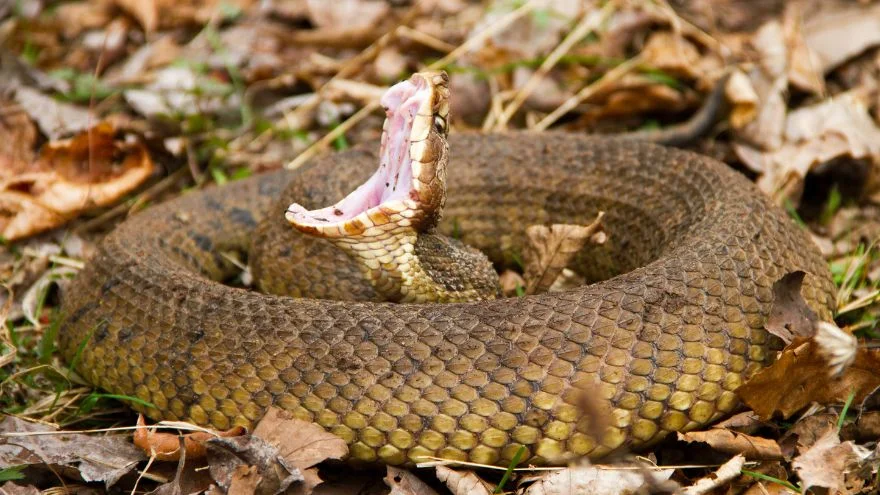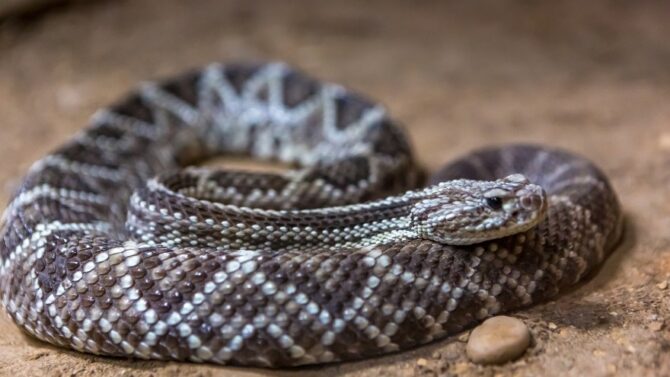South Carolina’s diverse natural habitats, ranging from swampy lowlands and pine forests to coastal shores, provide a sanctuary for a wide range of animal species.
However, not all of these creatures are friendly, and some can pose a significant threat to human life.
From venomous snakes and reptiles to spiders and fish, South Carolina is home to some of the most dangerous animals in the United States.
To help you stay safe and informed, this article will showcase the top 10 deadliest animals in South Carolina, along with crucial wildlife safety tips.
What are the Most Dangerous Animals in South Carolina?
1. Brown Recluse Spider
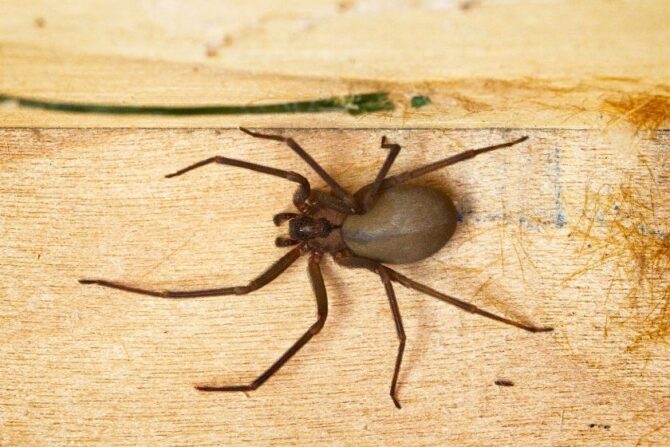
- Scientific Name: Loxosceles reclusa
- Habitat: Woodpiles, sheds, garages
- Threats: Venomous bite can cause tissue damage and necrosis
For good reasons, the brown recluse is our first dangerous spider species.
The brown recluse spider is one of the few spider species in North America whose venom can put you in the hospital.
Only two other spiders can have this effect, the black widow and the Chilean recluse.
What’s even scarier about the brown recluse spider is that it lives amongst humans, and you’re more likely to come across it indoors than other animals on this list.
That said, this spider is called a recluse for a reason—it flees more than it inflicts venom.
2. Bull Shark

- Scientific Name: Carcharhinus leucas
- Habitat: Estuaries, rivers, often found in shallow waters
- Threats: Aggressive, known to attack humans
The bull shark also goes by the name Zambezi shark and Lake Nicaragua shark in Africa and Nicaragua, respectively.
It is often found in brackish waters and has a negative reputation. The bull shark is known for its aggressiveness and seems unapologetic about it.
If you plan to go swimming in South Carolina, beware of the bull shark! Bull sharks are considered to be deadly.
The bull shark is one of three sharks that are likely to attack humans. The great white shark and tiger shark make up the risky trio.
3. Cottonmouth

- Scientific Name: Agkistrodon piscivorus
- Habitat: Creeks, streams, marshes, swamps
- Threats: Venomous snake with a painful bite, found near water and can be aggressive if threatened
The cottonmouth is also called the water mocassin, swamp mocassin, black mocassin, or just simply viper.
This dangerous semiaquatic pit viper is a snake species that range in South Carolina and is highly venomous. One bite from this reptile can be both painful and fatal.
You’d know a cottonmouth is feeling threatened when it displays its fangs and coil the body.
Do not go too close to this snake, even if it isn’t showing signs of aggression.
It would be best if you also were cautious while swimming as the cottonmouth also spends part of its time in the water.
4. Southern Copperhead
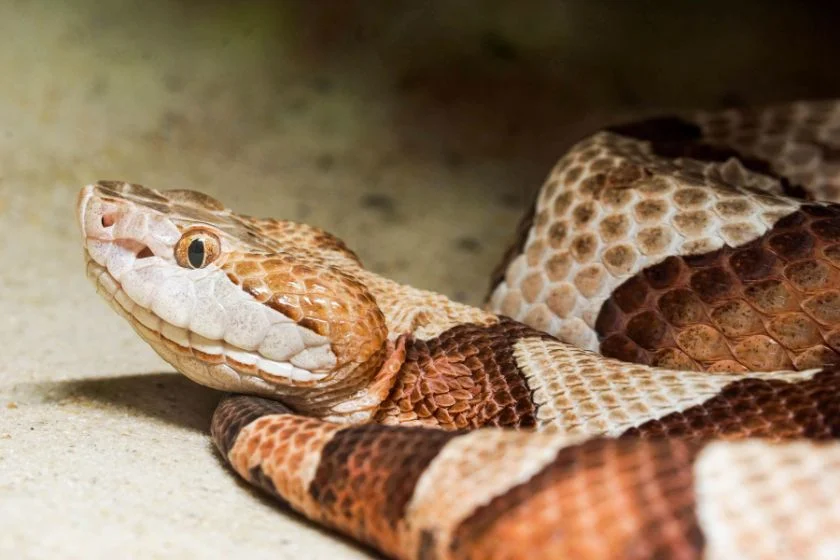
- Scientific Name: Agkistrodon contortrix
- Habitat: Woodlands, forests
- Threats: Venomous snake, can cause serious injury or death with their bite
The Southern copperhead is simply called the copperhead, and it is just as venomous as the cottonmouth.
Handling it is risky, and one bite can kill. As beautiful as the snake is, you should avoid it.
It is easy for humans to encounter a copperhead, and because it is an ambush predator that camouflages to hunt, humans can accidentally step on it.
The copperhead doesn’t also slither away like other snakes do when humans approach. It freezes on the spot and will bite if stepped on. Thread any forests in South Carolina with caution.
5. Bluespotted Ribbontail Ray
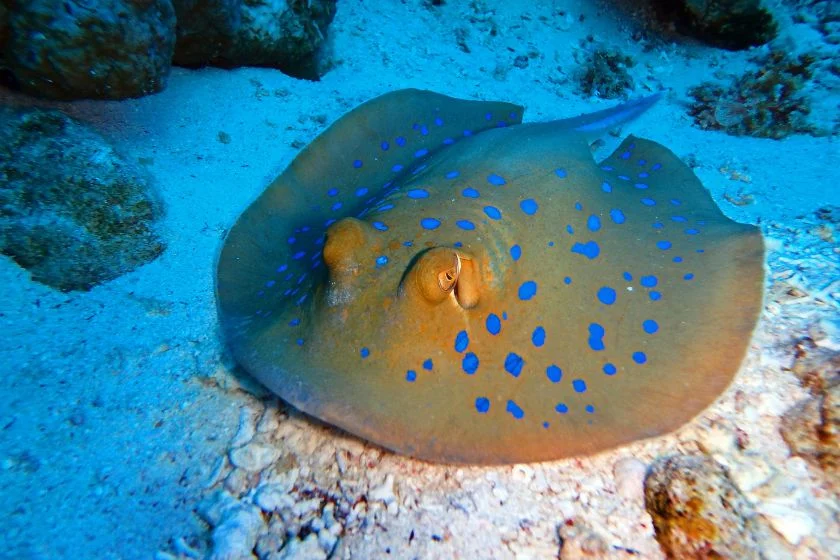
- Scientific Name: Taeniura lymma
- Habitat: Coral reefs, seagrass beds
- Threats: Venomous barb on the tail can cause extreme pain and serious injury to humans
The bluespotted ribbontail ray is one of many stingray species. Stingrays are related to sharks and are known as cartilaginous fish.
The bluespotted ribbontail ray is under the Dasyatidae family. This fish can be found in various habitats.
The bluespotted ribbontail ray is wary of humans and tends to shy away, but that doesn’t make it any less dangerous! Its tail spines are venomous, and the injury it causes requires medical attention.
6. American Alligator
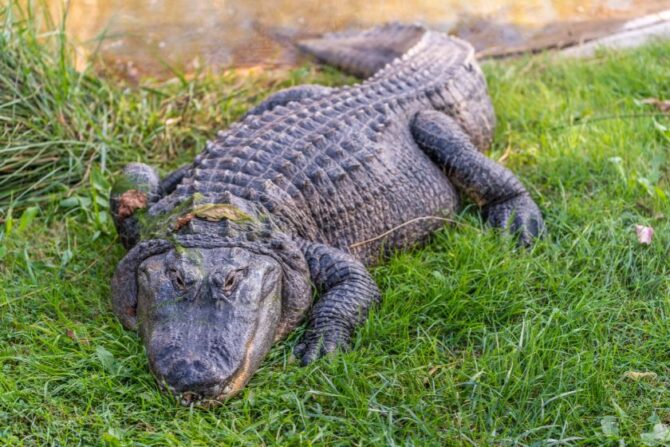
- Scientific Name: Alligator mississippiensis
- Habitat: Swamps, streams, ponds, lakes, rivers
- Threats: Powerful predators with a strong bite, known to attack humans when provoked or defending their territory
You don’t need anyone to point out the dangers of all alligator species. The American alligator is not different.
Though considered a keystone species because of the small ponds it creates—which help aquatic organisms during the dry season—it is not human-friendly.
Fortunately, attacks from American alligators (and alligators in general) are considered rare.
You wouldn’t want to be one of the rare cases — do you? So you must still be careful about swimming in ponds and lakes where alligators might dwell.
7. Eastern Coral Snake

- Scientific Name: Micrurus fulvius
- Habitat: Glade land, scrub oak, live oak, hammock
- Threats: Venomous snake, can cause paralysis or even death, often difficult to spot
The eastern coral snake also goes by the name common coral snake and American cobra, and you can only find it in the United States.
Though very beautiful, the eastern coral snake’s venom is anything but that. Like other species of snakes on this list, it can be fatal.
One problem with the eastern coral snake is how similar it looks to other non-venomous snakes, like the scarlet snake and the scarlet kingsnake.
The red and black stripes are common to all three species. To be safe, don’t touch or step on any snake you see in the wild.
8. Southern Black Widow Spider

- Scientific Name: Latrodectus mactans
- Habitat: Rock piles, rodent burrows, hollow tree stumps
- Threats: Venomous bite can cause muscle pain, cramps, and spasms
The Southern black widow spider is also called the black widow and the shoe-button spider. And as we pointed out above, it is one of three spider species with a venom that has a strong impact.
Though it isn’t fatal to a healthy adult, it still leaves damage.
The black widow is thus not as dangerous as other animals we’ve mentioned, but you should still not be carefree with one. The venom is neurotoxic.
9. Eastern Diamondback Rattlesnake
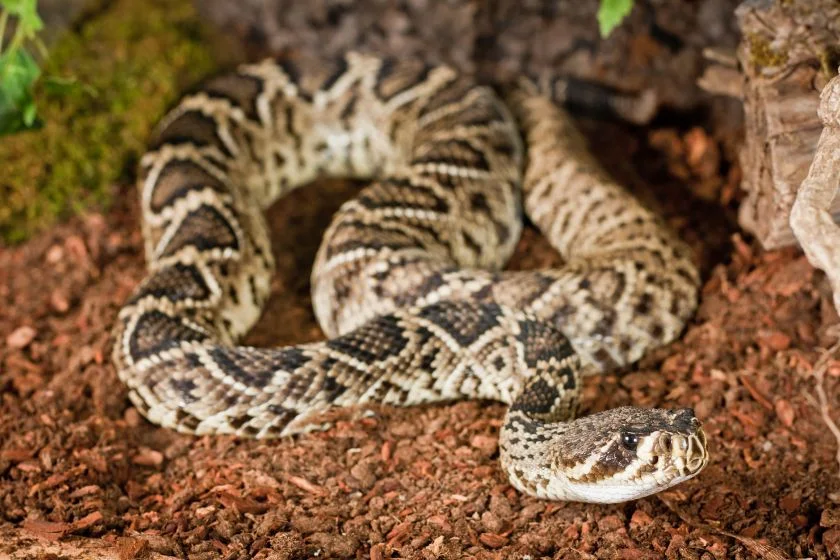
- Scientific Name: Crotalus adamanteus
- Habitat: Dry pine forests, sandhills, Flatwoods
- Threats: Venomous, potentially fatal bites, aggressive when threatened
The eastern diamondback rattlesnake is the largest living rattlesnake and the longest venomous snake.
The two facts alone show how dangerous these snakes can be.
Add the fact that the eastern diamondback is one of the most dangerous snakes in North America, and you have enough reason to avoid it.
Fortunately, the eastern diamondback rattlesnake is not aggressive. Its venom can kill, and though the mortality rate isn’t up to 50%, it is high enough for concern.
10. Red Lionfish
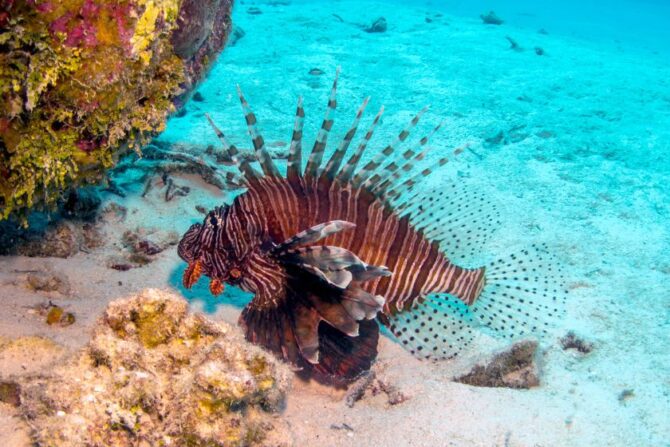
- Scientific Name: Pterois volitans
- Habitat: Ocean
- Threats: Venomous spines, invasive species
The red lionfish is one of the largest lionfish species in the ocean, but that’s not what makes it dangerous.
The risk comes from its venomous spines, which scare away any potential predators in the sea and renders the red lionfish inedible.
You might not encounter a red lionfish as easily as you would see a black recluse spider, but it still falls under fish that you should avoid.
South Carolina Wildlife Safety Tips
There are rules to everything. Relating to the wildlife in South Carolina also has boundaries for your safety and theirs.
Ensure you follow these dos and don’ts:
- Keep your distance when observing these animals. You can have binoculars to view them properly without having to come close. Many animals are wary of humans and usually attack because they feel threatened. The farther you stay, the better.
- Don’t feed the wildlife. It might seem like a humane thing to do, but remember that these animals already survive without you. Feeding these animals will also make them associate people with food, and they’d turn aggressive whenever they see someone because they’re looking for food.
- Don’t tease an animal, startle it, touch it, or try to chase it. This would make the animal feel threatened, and if they don’t turn back to attack, running away can put them at risk. It would be best if you left them alone.
- Don’t touch a baby animal. The mother might be close by, and she may not appreciate seeing you close to her baby. If you find a lost baby animal or an injured mother, report it to the right authorities.
- Similar to the last point, report any injured animals to the right authorities. Even when injured, do not touch the animal or go closer. It may react instinctively.
- Drive slowly if you’re exploring the wildlife with a car, and if on foot, ensure you look at where you’re stepping. Wear strong boots too.
Conclusion
The most dangerous animals in South Carolina are not evil in and of themselves. They tend to stay out of humans’ way and are essential to nature as a whole.
However, the venom of some and the aggression others show makes them deadly to humans.
Keep your distance, follow the safety guidelines in this article, and you will be safe.
Next up…
- Venomous Snakes In South Carolina (6 Poisonous & Deadly Species)
- 15 Most Dangerous Animals In The United States
- Top 20 Most Dangerous Animals in the World
